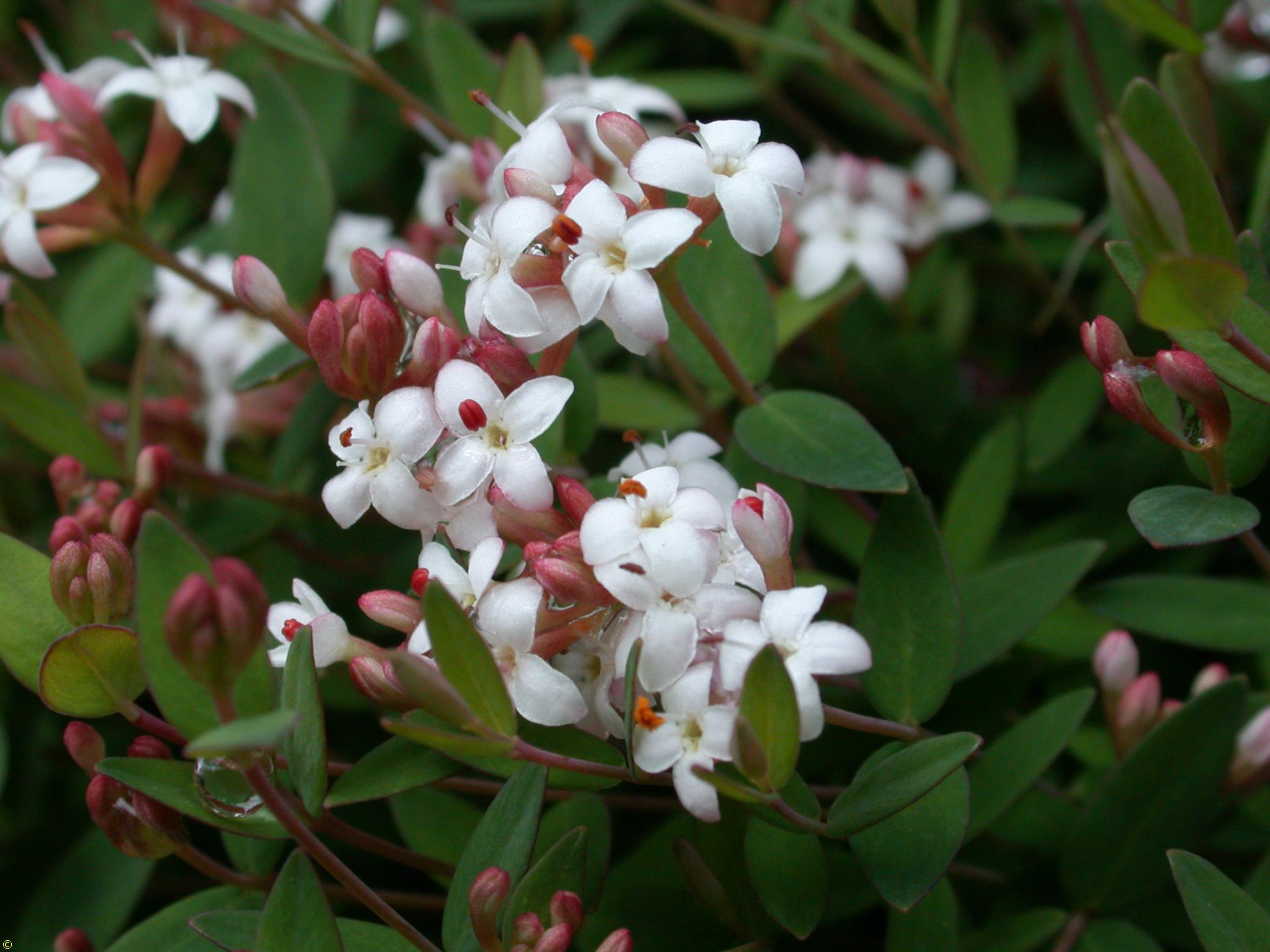Scientific Name: Pimelea filiformis Endemic Having a natural distribution confined to a particular geographic region
Common Name: trailing riceflower
Family Classification (Clade): Eudicots
Family: Thymelaeaceae
Form Description: Prostrate/scrambling, small flat clumps; light brown/grey bark.
Flowers: Clusters of 6-9 flowers at end of branch, very slender stems. Flowers, 5mm, white to deep pink; tubular.
Fruit: Nut – dry
Municipality
Plant Communities
Habitat Notes
Known only from a few localities in northern Tas.
Site Tolerance
Dry, Moist, Shady
Soil Tolerance
Clay, Fertile, Loam, Well-drained
Frost Tolerance
Hardy
General Notes
Occurs in heavy or light acidic soils and does best in a semi-shaded site but will tolerate plenty of sunshine. Also tolerates slightly alkaline soils. Excellent as a ground cover beneath shrubs and for growing over rocks and embankments. Attracts butterflies. Resistant to Phytophthora cinnamomi.
Propagation Calendar
-
Flowering Month
Jan Feb Mar Apr May Jun Jul Aug Sep Oct Nov Dec -
Seed Collecting Month
Jan Feb Mar Apr May Jun Jul Aug Sep Oct Nov Dec -
Sowing Month
Jan Feb Mar Apr May Jun Jul Aug Sep Oct Nov Dec -
Cutting Month
Jan Feb Mar Apr May Jun Jul Aug Sep Oct Nov Dec
Propagation Method
Seed Information
Seed Collection
Very difficult to grow from seed. Seed releases very quickly once ripe especially during hot weather. Rub fruit over wire screen to remove outer covering.
Seed Treatment Method
Smoke Smoke treatment improves germination in some species. Smokey products, e.g. smokey vermiculite, can be purchased and applied to the sown seed, or sown seeds can be treated directly with smoke from a source such as a drum with a fire and hose.
Seed Treatment Notes
Smoke treatment may improve results for some species. Some success has also been reported with burning of small twigs and leaf litter on top of seed; results erratic. May respond to a combination of heat and smoke treatment.
Cutting & Division Information
Usually grown from cuttings of young growth which may be slow to strike, or by division of layered stems. Care should be taken not to strip back the young bark.

